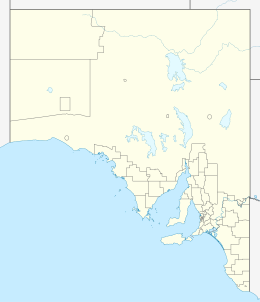Lewis Island (South Australia)
| Geography | |
|---|---|
| Location | Spencer Gulf |
| Coordinates | 34°57′20″S 136°01′54″E / 34.95556°S 136.03167°ECoordinates: 34°57′20″S 136°01′54″E / 34.95556°S 136.03167°E |
| Administration | |
|
Australia
|
|
Lewis Island is an island located in Spencer Gulf off the east coast of Jussieu Peninsula on Eyre Peninsula in South Australia approximately 29 km (18 mi) south-east of Port Lincoln. It was named by Matthew Flinders in memory of George Lewis who was one of the eight crew lost from a cutter that capsized sometime after being launched from the HM Sloop Investigator to search for water on 21 February 1802. Since 2004, the island has been part of the Memory Cove Wilderness Protection Area.
Lewis Island is located approximately 29 km (18 mi) south-east of Port Lincoln, 926 m (3,038 ft) south of Little Island and 2.8 km (1.7 mi) north of Smith Island. The island has a maximum height of 44 m (144 ft) above sea level. Access is possible by boat on the island’s north east coast during calm weather subject to tidal conditions, particularly in the channel separating it from Little Island.
Lewis Island was formed about 8400 years ago when sea levels rose at the start of the Holocene. The island’s structure consists of granite outcrop finished with a capping of calcarenite. Unlike the neighbouring islands, the island’s cap finishes in a peak at its southern end rather in lieu of a flat plateau. The island rises from the seabed at 30 m (98 ft) over a distance of within 100 m (330 ft) on its west, south and east faces.
As of 1996, the island was dominated by a shrubland of marsh saltbush on its deeper soil. It also supported at least 19 other species including sea celery, karkalla, grey samphire, Australian hollyhock, native juniper, austral stork's bill and pointed twinleaf. Disturbance of the island’s surface by guano mining was suggested as the opportunity for weeds, particularly the African box thorn, to spread onto the island.
...
Wikipedia

